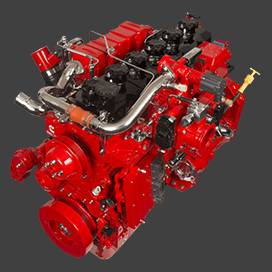Авг . 15, 2024 10:33 Back to list
Exploring the Benefits and Mechanism of Floating Brake Drum Systems in Automotive Applications
Understanding the Floating Brake Drum An Essential Component of Modern Braking Systems
The floating brake drum is a pivotal component in the braking systems of various vehicles, especially in heavy-duty applications such as trucks, buses, and some high-performance cars. This innovative design has significantly enhanced the efficiency and reliability of brake systems, contributing to safer driving experiences and improved vehicle performance. To understand the floating brake drum, it is essential to explore its design, functionality, advantages, and applications.
Design and Functionality
A floating brake drum is characterized by its unique mounting system, which allows it to float or move slightly during the braking process. Unlike conventional brake drums that are rigidly fixed, floating brake drums are mounted on spindles through a mechanism that permits minimal lateral movement. This design enables the drum to self-align with the brake shoes as they expand during braking. When the brakes are applied, the friction between the brake shoes and the inner surface of the drum slows down the wheel, providing the necessary stopping power.
The key components of a floating brake drum system include the drum itself, the brake shoes, the spindle, and various springs and retainers. The drum is typically made of cast iron or other durable materials that can withstand the high temperatures generated during braking. The ability of the drum to float allows for compensation of any misalignment between the drum and the shoes, which can occur due to wear and tear or uneven loads.
Advantages of Floating Brake Drums
One of the primary advantages of floating brake drums is enhanced braking efficiency. The self-aligning feature ensures even contact between the brake shoes and the drum surface, which leads to increased friction and improved braking performance. This uniform contact also reduces the wear on both the shoes and the drum, extending their lifespan and minimizing maintenance costs.
floating brake drum

Moreover, floating brake drums provide better heat dissipation. During prolonged braking, especially in heavy vehicles, brakes can overheat, leading to brake fade—a significant safety concern. The design of floating brake drums allows for adequate airflow around the drum, helping to cool it down more effectively than traditional fixed drums.
Another benefit is the improved safety that comes from the system's ability to adjust to varying loads and conditions. Because the drum can float, it accommodates changes in alignment that may occur under load, ensuring that the brakes remain effective regardless of the vehicle’s weight distribution.
Applications in Modern Vehicles
Floating brake drums are increasingly used in various modern applications. They are particularly common in commercial vehicles that require robust and reliable braking systems. Trucks and buses, which often carry heavy loads and frequently stop and start, benefit significantly from the advantages offered by floating drum designs.
Additionally, some high-performance vehicles have adopted floating brake drum systems to enhance their braking capabilities. In these applications, the precision and reliability of floating drums contribute to improved handling and performance, especially at high speeds or during aggressive driving conditions.
Conclusion
In conclusion, the floating brake drum represents a significant advancement in brake technology, offering multiple advantages in terms of efficiency, safety, and durability. As the automotive industry continues to evolve with a focus on performance and safety, the adoption of innovative braking solutions like the floating brake drum will likely increase. Understanding the fundamental aspects of this component can help vehicle owners and manufacturers appreciate the importance of effective braking systems in ensuring safe and reliable operation on the road.
-
Brake Drum Man - High-Quality Drum Brake Drums & Brake Shoes for Reliable Performance
NewsJun.24,2025
-
High-Quality Brake Drum Kamaz – Durable Drum Brake Drum & Brake Shoe Replacement
NewsJun.10,2025
-
High-Quality Brake Drum Liza for Drum Brake Systems - Superior Durability and Performance
NewsJun.10,2025
-
High-Quality Brake Drum Kamaz – Durable Drum Brake Drum & Brake Shoe Solutions
NewsJun.10,2025
-
Durable Kamaz Brake Drums High-Performance Truck Parts
NewsJun.09,2025
-
Premium Brake Drum Maz Kit with Shoes Enhanced Braking
NewsJun.09,2025
